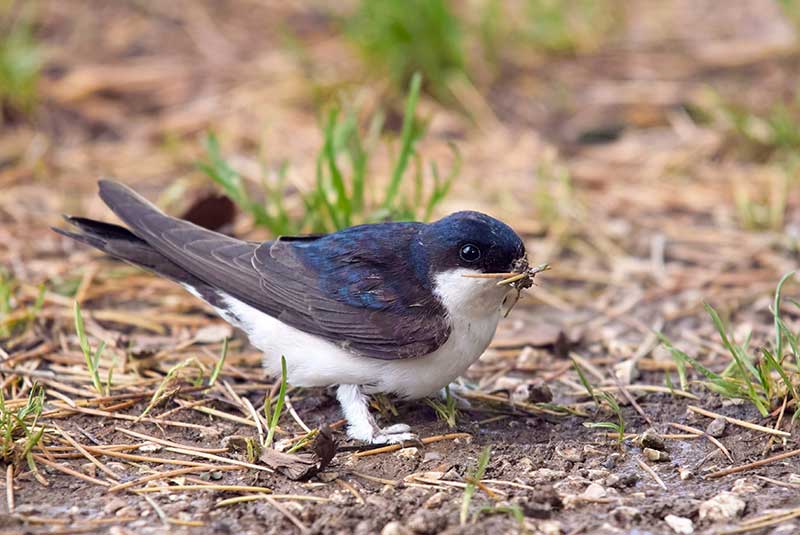
Breeding birds: 510,000 pairs
Family: Swallows & martins
Male house martins have a glossy blue crown and back with a white rump and long, black wings and forked tail. The underparts are white. They have a short black bill, dark brown eyes, white, feathered legs and pink feet.
Female house martins look similar to males except the underparts are greyer
Juvenile house martins have less blue and are duller and browner with a shorter tail.
House martins breed in colonies of hundreds of pairs on cliffs, under bridges. They will also use manmade structures such as under the eaves of houses when they tend to breed in smaller colonies.
The nest is made from mud which the house martins collect from nearby streams and ponds. The add the mud in layers to form a cup shaped nest with a narrow entrance at the top and line it with grasses and other soft materials.
House martins lay 1-7 eggs, which are incubated by both sexes for 14-16 days. The chicks are fed by both parents and fledge 22-32 days after hatching. They return to the nest for roosting for several days after during which the adults continue to feed them.
House martins feed almost exclusively on insects which they catch on the wing. They are also able to hunt on the ground for insects.

House martins can be seen between April and October across the whole of the UK except in far north and west Scotland.
They are found in towns and villages, areas of mixed agriculture and near water and woodland.
Although thousands of house martins are ringed in the UK eery year, where they go each winter is a complete mystery because few have ever been observed in Africa.
2 Responses
HI Allison,
The Martins are very likely to come back dependent on surviving the migration, which can be tricky with freak weather systems to negotiate in recent years. If you want to find out more about House Martins and how to help them, there is a new independent charity with a great website…House Martin Conservation UK & Ireland. Did they come back btw?
We have some of these little birds nesting under our roof. (Warnham, West Sussex) So sweet to see them flying back to feed their babies. I thought they were swallows at first but my husband found your website and now we think they are house martins.
Do you know if they will come back next year?